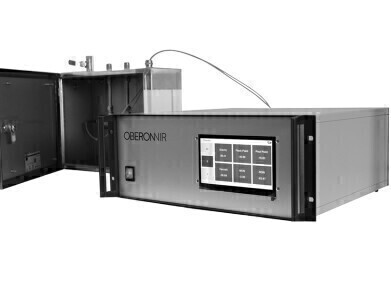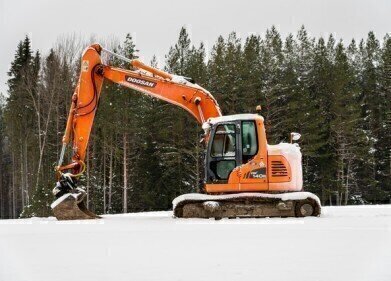-

-
 Figure 1
Figure 1 -
 Figure 2
Figure 2 -
 Figure 3
Figure 3 -
 Figure 4
Figure 4
Pour Point
Freezing Point Determination of Avgas and Jet Fuel
Jun 21 2017
Per the Federal Aviation Administration’s (FAA) website, Aviation Gasoline, Avgas, is the last remaining lead-containing transportation fuel. Lead, a toxic, heavy metal, is used as an anti-knock agent in Avgas in the form of tetraethyl lead, TEL, (CH3CH2)4Pb. Lead is dispersed into the atmosphere during the combustion of Avgas. With the goal of reducing lead emissions, the United States’ FAA and Environmental Protection Agency, EPA, are working together to eliminate these emissions from gasoline piston-engine aircraft. Qualifying unleaded alternative Avgas can also lead to changes in the freezing point characteristics.
At very low temperatures, aviation fuels will develop solid hydrocarbon crystals. The freezing point test for aviation fuels was developed to determine the temperature at which these crystals completely disappear. The freezing point test is important for aviation fuels since impeding fuel flow can have catastrophic effects for aircraft such as interfering with the atomization of the fuel. In the past, the experts who developed fuel specifications and the test methods designed to test these specifications determined that at altitude, the fuel used in piston aircraft rarely experienced the low temperatures commonly encountered at higher altitudes by turbine diesel powered airplanes. However, Avgas freezing points can be negatively affected due to certain components found in today’s Avgas either through blending or by contamination.
Avgas freezing point temperatures are usually around the -100â°C range or lower whereas jet fuel specifications require a freezing point maximum of -40â°C (Jet A) or -47â°C (Jet A-1). In fact, the specification to test the freezing point of Avgas, ASTM D910, simply requires reporting freezing point temperature as 'report < -58â°C if no crystals are detected'. We found that the freezing point of Avgas can be affected by contamination or with addition of aromatics, especially symmetrical aromatics.
Before the development of the automated freezing point analyser, such as the OptiFZP by PAC, reaching very low temperatures was difficult at best and at a minimum, dangerous when using dry ice/alcohol coolant solutions. Dry ice/acetone, petroleum naphtha, methanol or ethanol can only cool down to around -69â°C. Below this temperature, liquid nitrogen must be used. The OptiFZP uses a Stirling chiller, which operates on the cyclic compression and expansion of helium, the heat transfer medium. The OptiFZP can easily and quickly achieve temperatures below -100â°C without the need for external chillers.
There are some instances where the freezing point of Avgas is lower than -100â°C. This means that crystallization does not occur even when these low temperatures are achieved. Figure 1 shows the graph from the OptiFZP of one of these Avgas samples. In this case, no crystals were formed even at -120â°C.
What meaningfully affects the Avgas freezing point are components that significantly varies from the petroleum alkylates used in today’s blends. One example is the effect on freezing point temperature of Avgas contaminated with jet fuel. A customer had a real-life issue with jet fuel contaminating his Avgas. In order to determine effect of jet fuel contamination on freezing point, the customer dosed his Avgas with Jet A-1.
The results are shown in Table 1 below:
| 'Base Avgas' | 'Impurity' | OptiFZP – ASTM D7153 |
| Av Gas (%vol) | Jet Fuel (%vol) | Result (â°C) |
| 100 | 0 | -89.3 |
| 95.8 | 4.2 | -84.3 |
| 91.6 | 8.4 | -78.5 |
| 83.3 | 16.7 | -71.2 |
| 66.6 | 33.4 | -64.9 |
| 50.0 | 50.0 | -60.0 |
| 25.0 | 75.0 | -54.9 |
| 0 | 100 | -50.3 |
The results are graphed in Figure 2. The graph in Figure 2 shows that low levels of jet fuel contaminating Avgas can be detected with the OptiFZP because the instrument can go to very low temperatures and the two-detector detection system picks up both large and small crystals.
Symmetrical aromatics also affect the crystallization in Avgas. For a solution containing 10% benzene in Avgas, the initial small crystals were detected by the main detector of an OptiFZP at -98.7â°C and larger crystals built up and were detected by the secondary detector at -104.9?C. However, the last large crystal melted at -49.0â°C but the last smaller crystals melted at -39.0â°C. For normal jet fuel, the difference between crystal formation and crystal melting is around 5 or 6â°C. For large and fine crystals, the melting temperature difference can be only a few degrees or a few tenths of degrees. Figure 3 shows a typical freezing point graph for jet fuel on an OptiFZP. The difference between the coldest temperature which crystals are formed and the freezing point is 6.4â°C.
For Avgas, we found that the difference between the temperature crystals form and the temperature the last crystal melts can be greater than 60â°C. Figure 4 shows the crystallization-melting point graph on the OptiFZP for 10% benzene in Avgas. We expect this same behavior for any symmetrical aromatic. As we move to find replacements for 100LL Avgas, the compositional variations of these aviation fuels may cause unexpected changes to expected freezing points. The OptiFZP, using a two-detector system and ability to reach super cold temperatures without the need for external chillers, is well suited to study this phenomenon.
Digital Edition
PIN 25.5 Oct/Nov 2024
November 2024
Analytical Instrumentation - Picturing Viscosity – How Can a Viscometer or a Rheometer Benefit You? - Sustainable Grease Formulations: Evaluating Key Performance Parameters and Testing Method...
View all digital editions
Events
Dec 03 2024 Dusseldorf, Germany
Dec 08 2024 Anaheim, CA, USA
Turkey & Black Sea Oil and Gas
Dec 11 2024 Istanbul, Turkey
Dec 19 2024 Aurangabad, India
Jan 20 2025 San Diego, CA, USA
.jpg)

















